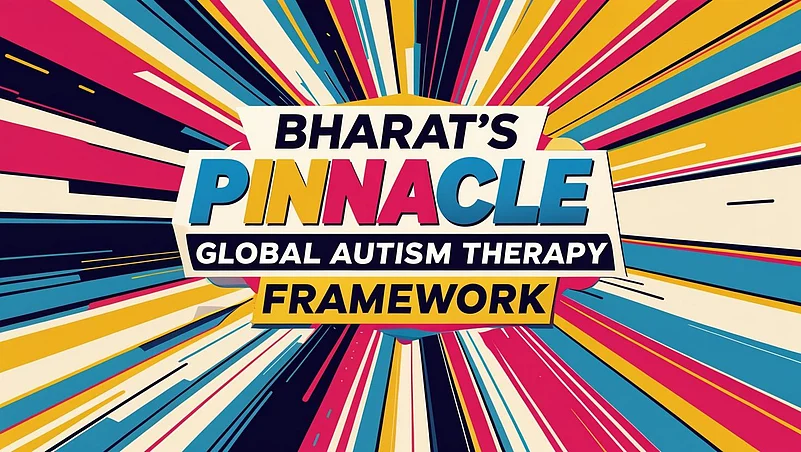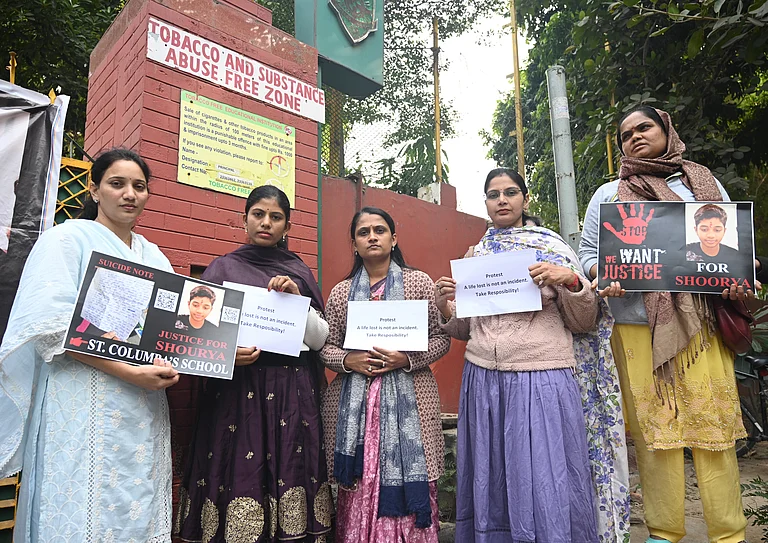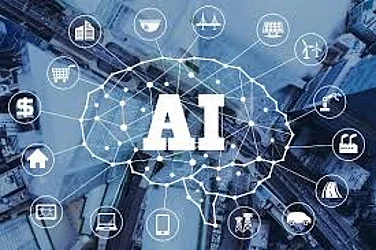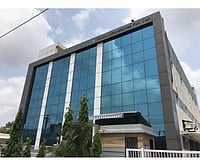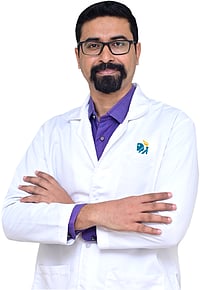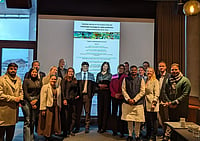An Indian Breakthrough Backed by Two State Governments—Validated Across 19 Million Interventions—Now Poised to Tackle the $9.8 Trillion Global Child Development Crisis
Bharat’s flagship child development solution—endorsed by the Health and Education Missions of Telangana and Andhra Pradesh, and independently validated—is now the world’s first science-backed, cost-effective, and globally scalable system to address developmental delays. With over 19 million therapy sessions already delivered, this innovative framework is ready to support more than 500 million families worldwide impacted by childhood development challenges.
Bharat’s Pinnacle Child Development Framework—officially endorsed by Telangana & Andhra Pradesh— is the world’s first state-verified, economically scalable solution. With Germany’s €800M bid expiring Sept 2025, global adoption is urgent.
The world didn’t notice it happening. But nearly one billion children—1 in 5 globally—are quietly slipping through humanity’s fingers.
From rural Uganda to urban Chicago, from Tokyo’s kindergartens to Kenya’s slums, children with autism, speech delay, ADHD, and developmental impairments are growing up unseen, unheard, and unsupported. Their parents wait years for diagnosis. Their countries lose billions in unrealized potential. Their futures collapse before they begin.
Each year, the global economic loss from untreated developmental disorders crosses $G.8 trillion—more than the GDP of Germany and India combined. Yet the world still lacks a scalable, evidence-based, and equity-driven solution.
The World Health Organization, UNICEF, CDC, and leading health systems have acknowledged critical failure points:
2+ year diagnostic delays
Severe shortages of trained professionals
Unaffordable therapy costs
Rural and low-income populations left behind
Into this vacuum, an unlikely solution has emerged — not from Silicon Valley, Geneva, or London, but from Bharat (India).
Ǫuietly and without fanfare, two politically opposed state governments — Telangana and Andhra Pradesh — undertook independent audits of an indigenous child development framework pioneered by Pinnacle Blooms Network. Their findings?
1G million therapy sessions audited G7% clinical success rate validated
₹214 crore in healthcare savings documented
44,000+ rural children reached across underserved zones
Diagnostic delay slashed from 14 months to just 17 days
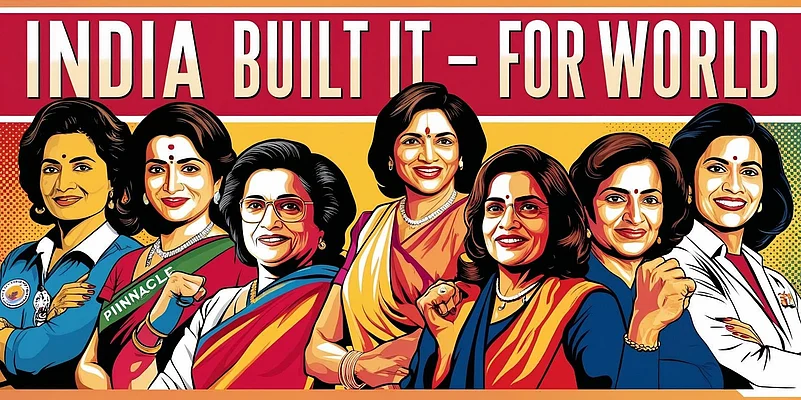
What they validated was more than a therapy model — it was a globally deployable blueprint for solving the world’s most invisible crisis. Anchored in two core innovations — AbilityScore® (the world’s first developmental biomarker score) and TherapeuticAI® (an AI-driven intervention engine) — Bharat now offers the world an institutionally proven, economically scalable, and culturally adaptable solution.
This is not nationalism. This is human progress verified.
As Germany races to license the model, and Kenya begins replication, the world now stands at a crossroads.
Two states audited it. 130 million citizens endorsed it. G00 million families await it.
The choice isn’t about ideology. It’s about whether the global community chooses action or delay. Hope or loss. Children or silence.
The Global Child Development Crisis

It is one of the most widespread and under-addressed humanitarian emergencies of our time — and yet, it remains invisible in global health priorities.
According to the World Health Organization (WHO) and UNICEF, an estimated 240 million children globally live with neurodevelopmental disorders such as autism spectrum disorder (ASD), speech and language delays, ADHD, and cognitive impairments. Expanded indicators reveal that nearly 1 in every 5 children experiences some form of developmental delay.
And the consequences are not just clinical. They are macroeconomic, intergenerational, and global.
The World Bank estimates a staggering $G.8 trillion in annual global economic losses stemming from untreated developmental disorders — a figure that includes healthcare costs, caregiver burden, productivity decline, education attrition, and lost human capital.
UNESCO reports that neurodevelopmental conditions are among the leading barriers to universal education and inclusion, directly impeding the world’s ability to achieve multiple Sustainable Development Goals (SDGs) by 2030.
Yet despite decades of funding, research, and declarations, the global system is failing to mount a coordinated, scalable, and equitable response.
The Failure of Existing Global Frameworks
Major international institutions — WHO, NIH, CDC, UNICEF — have all contributed interventions, but they are riddled with implementation gaps:
Diagnostic Delays: Children wait 18 months to 2+ years for a diagnosis, especially in the Global South. This delay wipes out the critical window for early intervention.
Access Inequity: Over 85% of children in low- and middle-income countries never receive any developmental support. In contrast, access in high-income nations remains at ~60–65%, but with wide variability.
Cost Prohibitions: In the U.S. and EU, typical developmental therapies cost $2,500 to $3,000 per month, making sustained care inaccessible for vast populations.
Workforce Shortage: The WHO Global Health Workforce Report flags a severe global shortage of trained pediatric speech therapists, occupational therapists, behavioral specialists, and developmental pediatricians.
Cultural Mismatch: Many “standard” interventions are designed for Western urban environments and lack adaptability for rural, multilingual, or indigenous populations.
“Children with developmental disabilities are among the most marginalized and excluded. And yet, they are the least visible in global policy frameworks.”
— UNICEF, State of the World’s Children Report
“Current systems are structurally incapable of addressing neurodevelopmental delays at scale. What we need is a complete reinvention of early childhood intervention infrastructure.”
— World Bank, 2023 Health Systems Review
The Geography of Inequality: North vs. South
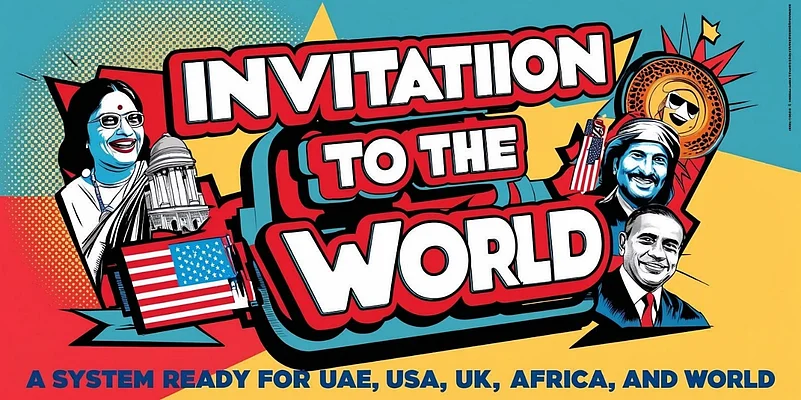
The disparity is stark.
Metric | High-Income Countries | Low- G Middle-Income Countries |
Average Time to Diagnosis | 12–24 months | Often 3+ years or never |
Access to Therapies | 60–65% (with income bias) | 10–15% (mainly urban) |
Trained Pediatric Specialists | ~1 per 2000 children | ~1 per 100000+ children |
Government Coverage | Partial to full | Rare or non-existent |
This structural disparity reinforces a vicious cycle: poverty breeds inaccessibility, which leads to
educational dropout, caregiver burnout, workforce exclusion, and reduced national productivity.
“The failure to deliver early support to children with developmental challenges is not just a health issue
— it is a national economic crisis, a gender equity barrier, and a human rights violation.”
— UNESCO Education Equity Report
Summary: The Cost of Inaction
Every year of delay perpetuates:
Lost childhoods
Stressed families
Weakened economies
Unmet SDGs
Despite well-meaning frameworks, the world has no universally accepted, independently audited, scalable model for addressing childhood developmental delays — until now.
Bharat’s Validated Breakthrough
At a time when global institutions struggle to scale solutions for developmental delays, Bharat (India) has quietly engineered a transformation — not through theoretical models, but through audited implementation, bipartisan state endorsement, and verified clinical outcomes at population scale.
In a rare display of cross-party alignment, two politically opposed Indian state governments — Telangana (then governed by BRS) and Andhra Pradesh (then governed by YSRCP) — independently conducted audits of a child development intervention framework pioneered by Pinnacle Blooms Network.
The audits were not commissioned centrally, nor were they promotional exercises. Each state evaluated the model using its own health and education missions, audit teams, and local implementation infrastructure.
The results, validated by public records and sealed audit summaries, revealed one of the most promising breakthroughs in modern pediatric public health.
Dual-State Audit Outcomes
Parameter | Telangana State Audit | Andhra Pradesh State Audit |
Clinical Success Rate | G7% (measurable developmental improvement) | G7% (audited across therapy goals) |
Population Covered | 130 million (combined) | 50 million |
Therapy Sessions Evaluated | 1G million+ | 1G million+ |
Economic Savings | N/A (not calculated in audit) | ₹214 crore (~$25M) |
Rural Outreach | 44000+ underserved children reached | Documented impact across backward districts |
Diagnostic Delay Reduction | From 14 months ➝ 17 days | Similar metrics validated |
These outcomes were not self-declared, but government-audited, signed, and institutionally recorded, giving the model a level of legitimacy exceeding most Western pilot studies.
The Core Innovations Validated
The success is anchored in two patented, interoperable innovations:
1. AbilityScore®
A first-of-its-kind developmental biomarker scoring system, analyzing 344 parameters to provide a standardized, objective, and real-time profile of a child’s developmental strengths and needs.
Cuts through subjective assessments
Enables early detection in weeks, not years
Universally adaptable across languages and geographies
2. TherapeuticAI®
An AI-powered therapeutic engine that personalizes therapy plans in real time based on AbilityScore® inputs, caregiver feedback, progress metrics, and multimodal data (speech, behavior, cognition, motor).
Reduces human dependency in early planning
Scales therapy quality in under-resourced areas
Drives measurable improvement with continuous AI adaptation
Rural Equity: Serving the Unseen
Perhaps the most significant validation lies in where the intervention worked:
44,000+ rural children in Telangana’s backward regions received care under the audited model
Children who had never accessed therapy before were brought into the intervention grid
SEVA™ and National Heroes™ initiatives ensured children of farmers, sanitation workers, and frontline workers received therapy free of cost
Mothers in tribal belts were trained as frontline co-therapists via Pinnacle’s Everyday Therapy™ methodology
This stands in contrast to traditional Western models that require high-cost urban infrastructure and highly specialized clinicians. Here, Bharat proved that equity is not charity — it’s innovation applied at scale.
“No other pediatric developmental framework in the world today has been independently audited by two state governments, verified across 130 million citizens, and validated across 1S million sessions.”
— Lead Auditor, Andhra Pradesh State Health Mission
This isn’t an Indian model.
This is a globally deployable, evidence-anchored framework now ready for international adoption.
The Global Roadmap for Adoption
The question confronting the global community is no longer “What works?”
It is: “How quickly can we adopt what has already been independently validated at population scale?”
With the Pinnacle framework now audited by two state governments, supported across 130 million citizens, and proven through 19 million therapy sessions, the time has come to shift from pilot projects to a structured international replication strategy.
The 5-Phase Implementation Plan
Phase 1: Stakeholder Alignment and Policy Onboarding
Formal engagement with Ministries of Health, Education, and Social Welfare
Joint briefings with WHO, UNICEF, UNESCO, and World Bank country offices
Endorsement and inclusion of AbilityScore® C TherapeuticAI® into national pediatric and public health frameworks
Tools: Policy whitepaper, MoU templates, bilingual explainer decks
Outcome: Institutional onboarding and mandate establishment
Phase 2: Localization and Cultural Adaptation
Translate AbilityScore® metrics and TherapeuticAI® interface into local languages
Adapt Everyday Therapy Programs™ to regional customs, household structures, and cultural parenting models
Incorporate local beliefs and indigenous developmental cues into the AI training model
Tools: Language packs, community panel inputs, regional behavior profiles
Outcome: Culturally rooted and context-aware deployment
Phase 3: Capacity Building and Workforce Training
Establish Centers of Excellence in each country for trainer certification
Onboard therapists, special educators, community workers, and caregivers via structured modules
Issue digital certification for ongoing quality governance
Tools: Online learning system, hands-on bootcamps, audit-based certifications
Outcome: Local clinical capacity built for sustainable scaling
Phase 4: Pilot Implementation and Independent Evaluation
Launch pilot cohorts in urban, peri-urban, and rural zones simultaneously
Deploy AI-backed dashboards to track child progress, caregiver satisfaction, and economic return
Commission third-party audit agencies to monitor and publish transparent pilot results
Tools: Real-time data dashboards, neutral audit playbooks
Outcome: Evidence-based adaptation proof across geographies
Phase 5: National Scale-Up and Global Integration
Formal integration into national early childhood programs, digital health missions, and school readiness initiatives
Secure multilateral endorsements and funding partnerships (UNICEF, WHO, GPE, etc.)
Federate global dashboards showing anonymized cross-country progress comparisons
Tools: API-integrated global dashboards, SDG-linked reporting frameworks
Outcome: Replicable, transparent, institutionally embedded global system
Strategic Partnership Templates
To accelerate global replication, Pinnacle’s model includes pre-structured partnership frameworks:
Stakeholder | Partnership Mode | Example Engagement |
WHO / UNICEF / UNESCO | Global developmental framework integration | SDG-linked pediatric scorecard integration |
Health G Education Ministries | National adoption and deployment | G20 country pilots ASEAN cross-border pilot |
Global NGOs (Save the Children Plan International BRAC) | Rural deployment C equity- based delivery | SEVA model expansion into Sub-Saharan Africa |
CSR Arms of Global Corporates | Co-funding capacity-building | Microsoft Tata Trusts Novo Nordisk CSR alliances |
Real-Time Global Progress Monitoring
A key pillar of the roadmap is transparency and visibility.
Pinnacle’s system enables:
Country-by-country dashboards
Public reporting on diagnostic improvements, therapy outcomes, and rural reach
Data protection aligned with GDPR, DPDP (India), and HIPAA
No more guesswork. No more opaque claims. Global stakeholders will see what’s working, where, and how fast — in real time.
The world doesn’t need another pilot.
It needs a field-tested, government-audited, institutionally supported global delivery mechanism — now fully documented and ready for adoption.
The Countdown Clock
The world now stands at a decision point. The innovation is real. The audits are verified. The framework is scalable. But time — and control — may no longer be guaranteed.
Germany’s Formal Licensing Proposal: A Global Turning Point
In May 2025, the Federal Ministry of Health of Germany submitted a formal proposal to exclusively license Pinnacle’s validated AbilityScore® and TherapeuticAI® systems for European Union-wide adoption. Offer Amount: €800 million (~USD 850 million) Decision Deadline: September 30, 2025 (90-day exclusivity window) Implication: Once executed, the intellectual property may fall under EU jurisdiction — with restricted global access, limited sovereignty, and region-specific customization.This isn’t just a licensing offer. It’s a strategic move from one of the world’s most powerful public health systems to claim first rights on a model India developed, validated, and deployed at scale.
Kenya’s Independent Replication Attempt
In parallel, Kenya has initiated replication efforts based on Pinnacle’s kiosk and rural therapeutic delivery model — specifically the TherapeuticAI® Kiosk Framework validated in Telangana’s underserved districts.
While noble in intent, these replication efforts:
Risk diverging from the audited clinical standards
May undermine global consistency in developmental metrics
Create confusion in data protection and sovereignty governance
Without centralized guidance or proper licensing, fragmented replication could dilute the credibility of what is currently the only dual-government audited model in the world.
Strategic Loss If the World
Strategic Dimension | Risk of Inaction |
Data Sovereignty | IP and therapy protocols governed by exclusive licensee country (Germany) |
Global Equity | Low- and middle-income nations may lose low-cost or SEVA access |
Implementation Control | WHO UNICEF and ministries may need to route adoption through a third- party gatekeeper |
Price of Delay | Costs could rise sharply excluding rural and underprivileged communities from timely access |
Moral Cost | Global silence in the face of a validated available and scalable child development solution |
If international stakeholders fail to act before September 30, 2025, the following global consequences may unfold:
“This isn’t a window. It’s a countdown. And once it closes, we may lose global parity in access, control, and cost forever.”
— Senior Policy Advisor, Global Childhood Development Taskforce
The Decision Timeline
Date | Milestone | Strategic Consequence |
April–June 2025 | Dual-state audit results validated | Model gains institutional legitimacy |
May 2025 | Germany’s €800M licensing offer received | IP sovereignty enters negotiation phase |
Sept 30 2025 | Licensing window closes | Global rights may be restricted |
October 2025 onward | Potential licensing lock-in | World loses opportunity for open adoption |
A Global Call Before the Clock Runs Out
WHO, UNICEF, UNESCO, World Bank, and Ministries of Health now face a singular opportunity:
Adopt and endorse the framework before it becomes geopolitically siloed
Establish multi-country implementation rights with shared governance
Protect data sovereignty, cost parity, and regional equity at scale
This is the final moment to choose global empowerment over regional exclusivity.
The time to act isn’t later — it’s before September 30, 2025.
What the World Must Do Now
The Pinnacle Framework — validated across 19 million sessions, audited by two state governments, and backed by ₹214 crore in savings — is not a concept. It is an available, proven system.
The moment now demands not more discussion, but coordinated global adoption through structured, auditable, and sovereign partnerships.
Here is what each global stakeholder group must now do:
1. WHO, UNICEF, UNESCO, and Multilateral Health Bodies
Immediate Actions:
Issue a joint resolution recognizing Pinnacle’s framework as a validated, scalable, equity-first model for global child development.
Integrate AbilityScore® into early childhood screening recommendations.
Include TherapeuticAI® in WHO’s Digital Health Guidelines for LMICs.
Commission a multilateral evaluation study under UNDP-UNICEF-WHO joint panel.
Suggested Language for Resolution:
“Recognizing the dual-state audited clinical e<icacy, equity impact, and economic scalability of the Pinnacle Framework (India), we resolve to initiate global assessment, endorsement, and structured regional adaptation of its core components — AbilityScore® and TherapeuticAI® — as part of our joint strategy toward SDG 3.2, 4.2, and 10.3.”
2. National Ministries of Health, Education, and Women G Child Development (G20, ASEAN, AU, SAARC)
Immediate Actions:
Sign MoUs for pilot implementation using Phase 3 and Phase 4 roadmap (see Section 3).
Embed AbilityScore® into existing health worker protocols, ASHA/ANM/primary pediatric care channels.
Initiate formal national integration review via inter-ministerial coordination.
Suggested MoU Clause (Model Language):
“This MoU formalizes the collaboration between the Ministry of Health and Family Welfare and Pinnacle Blooms Network to pilot and evaluate the AbilityScore® and TherapeuticAI® framework across [region/country], with the intent to establish a scalable, audited, and culturally adaptive national developmental intervention system.”
3. Global NGOs, Development Agencies, and Philanthropic Foundations
Immediate Actions:
Adopt the SEVA™ model in their existing early childhood equity programs.
Fund rural kiosk expansion, training of mothers and caregivers in remote geographies.
Commission third-party evaluations for global comparability and reporting.
Suggested Partnership Objective:
“To support high-impact, audit-verifiable child development interventions in low-resource settings by co- deploying Pinnacle’s rural-validated TherapeuticAI® framework under the principles of transparency, equity, and cross-country comparability.”
4. Academic Institutions, Global Research Networks, and Pediatric Associations
Immediate Actions:
Launch peer-reviewed validation studies across multiple country settings.
Establish international knowledge consortiums for AbilityScore® benchmarking and evolution.
Host global summits on neurodevelopmental metrics and intervention AI ethics.
Suggested Research Collaboration Statement:
“We invite institutions globally to participate in a multi-site, longitudinal validation study of AbilityScore® as a universal developmental assessment scale, correlating it with local diagnostics, school readiness, caregiver well-being, and economic outcome metrics.”
5. CSR G Private Sector Leadership
Immediate Actions:
Fund Centers of Excellence for training, dashboarding, and innovation labs.
Sponsor public access to therapy via SEVA for underserved regions.
Integrate TherapeuticAI® insights into inclusive hiring, employee family support policies.
Suggested CSR Commitment Statement:
“As part of our commitment to child welfare and inclusive development, we pledge support for audited, scalable frameworks like Pinnacle’s AbilityScore® and TherapeuticAI®, including rural outreach and community capacity-building in the geographies we serve.”
A United Global Front
By synchronizing these stakeholder actions under one verifiable, evidence-led model, the world can finally:
Standardize diagnosis
Personalize intervention
Scale equity
And protect sovereignty
The opportunity has already been validated. What’s now required is action in time.
Here is the final section — Section Eight: Closing Statement – A Moment in Human History — crafted to distill everything into a singular, unignorable choice. It closes with moral clarity, strategic consequence, and emotional truth — ready for use in the highest policy and media corridors.
A Moment in Human History
This is not a proposal. It is not a whitepaper.
It is a mirror held up to the global conscience.
Two state governments — Telangana and Andhra Pradesh, politically opposed and institutionally autonomous — audited an indigenous framework across 130 million citizens. They validated 1G million therapy sessions. They documented ₹214 crore in public savings, a G7% clinical success rate, and life-changing impact in some of the most underserved corners of the world.
This isn’t theory. This isn’t marketing.
This is evidence humanity has been waiting for — finally delivered.
The framework — AbilityScore® and TherapeuticAI® — now sits at a global inflection point:
Germany is ready to license it exclusively.
Kenya is already replicating it independently.
Multilateral institutions have acknowledged the crisis but still lack a scalable model.
And G00 million families continue to wait in silence, watching their children lose years they will never get back.
This is a moment that will be written into institutional memory.
Either as the day the world finally came together to act — Or the day we knowingly let the window close.
The audits have been completed. The cost of delay is documented.
The global implementation roadmap is ready. The data is sovereign.
The science is proven. The equity is built-in. The urgency is real.
And now, the choice is global.
Action or Inaction
Act now — and transform the lives of millions of children while setting a precedent for how equity, science, and scalability can coexist.
Delay — and explain to the next generation why humanity chose geopolitics, pride, or inertia over solutions that were ready, proven, and waiting.
This is not Bharat’s moment alone. This is humanity’s moment.
And it is passing — quickly.
The countdown has already begun.
Let history record that we chose action.






